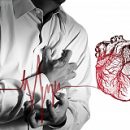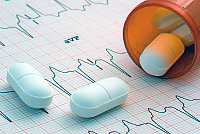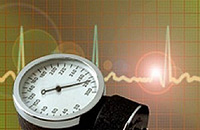Learn the symptoms and mechanism for the development of hypertensive disease. Forms and Stages of Hypertension. Diagnosis and methods of treatment of hypertensive disease.
Content
 Hypertension is one of the most
Hypertension is one of the most
common diseases of the cardiovascular system. Its characteristic
symptom — Heated blood pressure. The main causes of the disease
are endocrine disorders and the nervous regulation failure of the vascular tone.
Hypertonic disease — This is the pathology of cardiovascular
The device that develops as a result of the violation of the functionality of the highest
Centers of vascular regulation, renal and neurohumoral mechanisms.
Leads to arterial hypertension (increased blood pressure), organic and
Functional changes in the heart, kidneys and central nervous system.
Prevalence of hypertension among men and women approximately
the same, it usually develops from people over 40 years old, but in some cases
Maybe even teenagers. Hypertension speeds up and complicates
Atherosclerosis, contributes to the emergence of dangerous complications.
Symptoms
The most important symptom of hypertension — Increased
Hell (blood pressure). Pressure dramatically raising after physical or
psycho-emotional loads, to normal level returns only to
resulting in the reception of hypotensive. Normally, human pressure should not
exceed 140/90 mm RT. T. If at rest at double measurement hell
The systolic indicator is fixed over 140-160 mm RT. Art. and diastolic
— Over 90-95 mm RT. T. Over the course of two medical examinations, then the patient
The diagnosis is made «hypertension».
Development mechanism
Diseases
 The basis of the pathogenesis of the disease is an increase in volume
The basis of the pathogenesis of the disease is an increase in volume
cardiac emit per minute and increase resistance to vascular
Peripheral Rusla.
As a result of stress and a number of other reasons may violate
Regulation of the tone of peripheral vessels from the highest centers of the head
Brain (oblong brain and hypothalamus). Arrival spasm on periphery
causes the formation of discirculatory and diskinetic syndromes.
There is an increase in the secretion of neurogormons of Rynnic angiotensin-aldosterone
Systems. Aldosterone who participates in the mineral exchange causes in vascular
River delayed water and sodium, which contributes to an even greater increase in volume
Blood circulating in vessels and an increase in blood pressure.
Blood viscosity increases, leads to a decrease in speed
blood flow and fabric metabolic processes. Thicken inert walls of vessels,
It is narrowed by their lumen, the level of total peripheral resistance increases
vessels and arterial hypertension becomes irreversible. As a result
further increase in the level of permeability and plasma impregnation
Vascular walls are developing arteriosclerosis and ellastofibrosis, causing
Secondary changes in the tissues and leading to myocardial sclerosis, primary
nephlohangickerosis and hypertensive encephalopathy. With hypertension
The degree of damage to organs may be unequal, because there are several
ClinicO-anatomical options: with preferably heart lesions, kidneys
and brain.
Forms
Diseases
ClassifIkation
Hypertensive disease is customary to classify by degree
severity of damage to organs, level of blood pressure, reasons for its lifting,
Peculiarities of the disease and a number of other signs.
On etiological attribute arterial hypertension divide
on the:
- essential (primary);
- symptomatic (secondary).
By the nature of the flow, the disease happens:
- benign (slowly progressive);
- malignant (quickly progressive).
Depending on the level and stability of arterial
Pressures are distinguished by the degree of arterial hypertension:
-
I
Degree: 140 / 90-159 / 99 mm RT. T.; -
II
Degree: 160/100-179 / 109 mm RT. T.; -
III
Degree: more than 180/110 mm RT. T.
Stages
Slowly progressive hypertensive disease passes 3
Stages:
Stage I (soft moderate) — Characterized by unstable
arterial pressure that can fluctuate during the day ranging from
140/90 to 160-179 / 95-114 mm RT. T., Hypertensive crises rarely appear and
proceed easily. Signs of damage internal organs and CNCs are absent.
Stage II (heavy) — Hell fluctuates within
180-209 / 115-124 mm RT. T., Possible frequent hypertensive crises. Maybe
Observed: the narrowing of the arteries of the retina, raising the creatinine in blood plasma,
Microalbuminuria, transient brain ischemia, left hypertrophy
ventricle.
Stage III (very heavy) — Hell rises to
200-300 / 125-129 mm RT. T. and above, often arise heavy hypertensive
crisis. The phenomena of hypertensive encephalipathy, left-detection deficiency develop,
Thrombosis of the brain vessels, hemorgia, swelling of the optic nerve, stratifying
aneurysm of vessels, nephroangiosclerosis, renal failure, etc.









